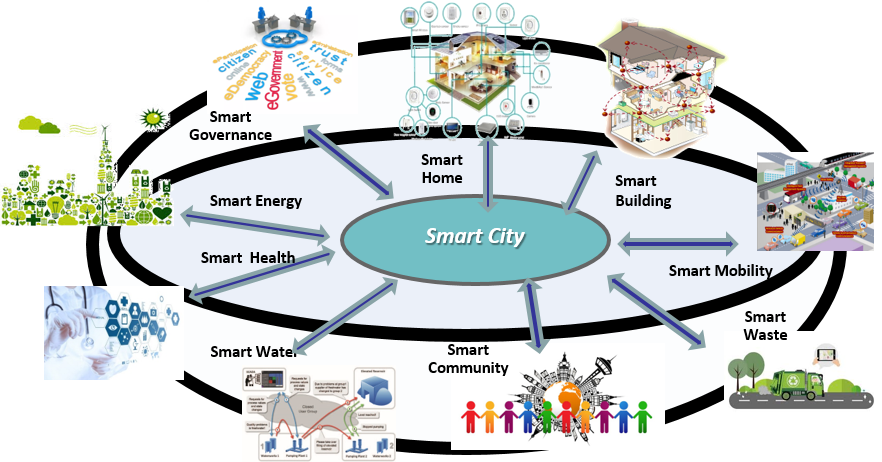Objective: a prototype of an urban environment provided with a new generation of innovative ICT services and technologies to improve energy and resource efficiency, environmental sustainability, emergency response, climate resilience, social cohesion and quality of life of citizens. The focal areas are:
- Energy, to develop new technologies, approaches and tools to manage and control urban energy systems and grids;
- Transport, to design efficient, safe and sustainable urban mobility systems by reducing the dependence on inefficient private motorized transport while mitigating traffic congestion and other transport-related costs;
- Building, to develop personalised solutions to optimise building energy consumption;
- Communities of Citizens, to design services to improve the social, economic, and environmental well-being of citizens. Engaging citizen’s means doing everything in an open, inclusive, and participatory way.
Approach: A Smart City is a a kind of system-of-systems with global missions, which implies and requires a strong synergy between different areas of applications. A the core of the Smart City vision there is the Smart City ICT Platform that collects data from citizens, places and urban assets, processes and analyzes this data to provide a new generation of innovative services for transportation, energy distribution, environmental monitoring, emergency response, and social activities.
Scientific Impact/Results: The scientific excellence of the activities carried out by the 18 Institutes involved in this AP led to:
- participation in 11 working groups, both at the European and Italian level, in order to discuss emerging research challenges, solutions, strategies and policies;
- Creation of 5 joint laboratories with universities and public authorities;
- participation in about 30 national and international projects, in order to study and realize a number of solutions to specific problems.

Download:


